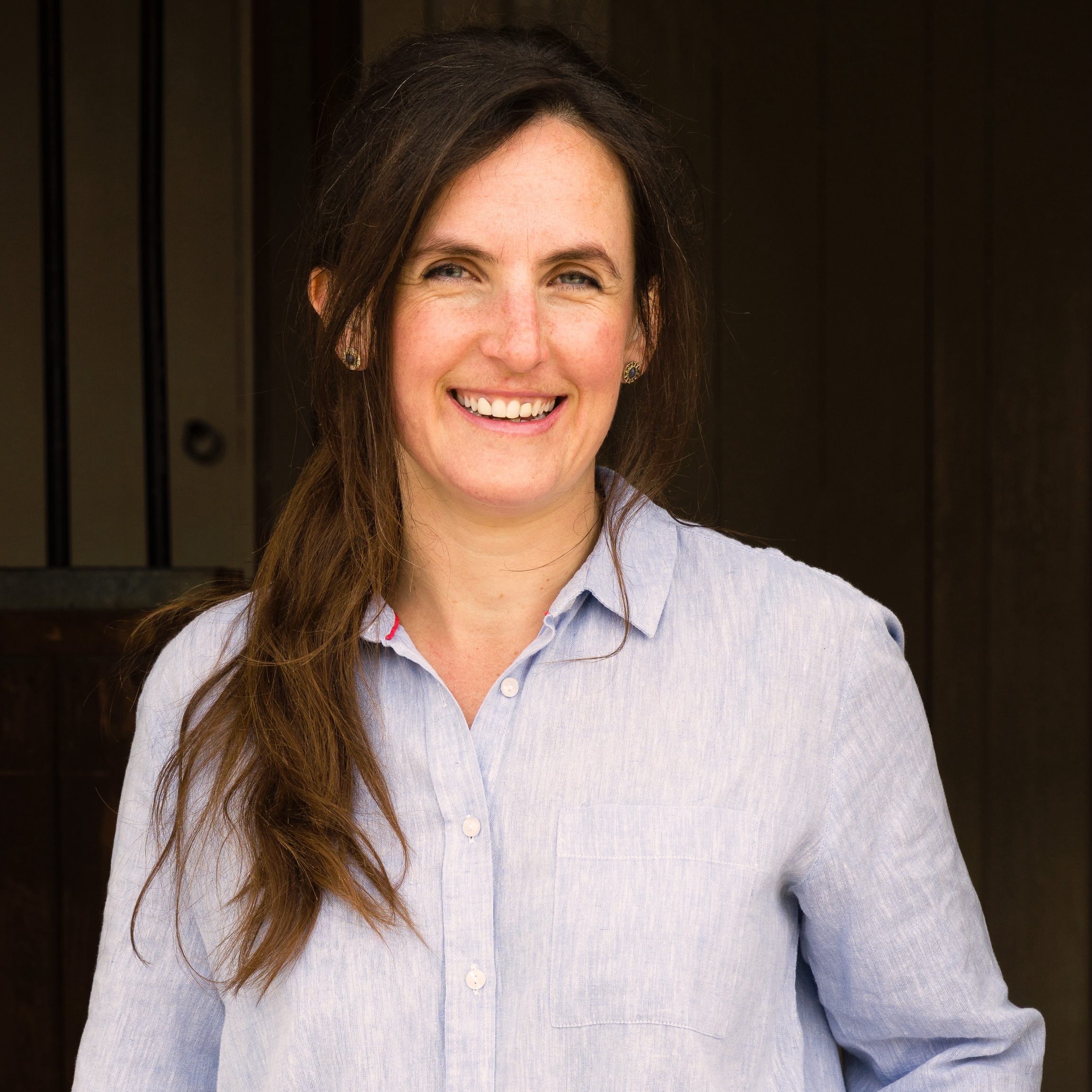The Pietra dura maker: 'Everyone else in Florence was looking at the paintings, but I was looking at the pietra-dura floor'
Pietra dura – the art of creating images by cutting stones and fitting them into a jigsaw of shapes – flowered under the Florentine Medicis, but there’s only one man in Britain creating these precious-stone mosaics today: Thomas Greenaway.

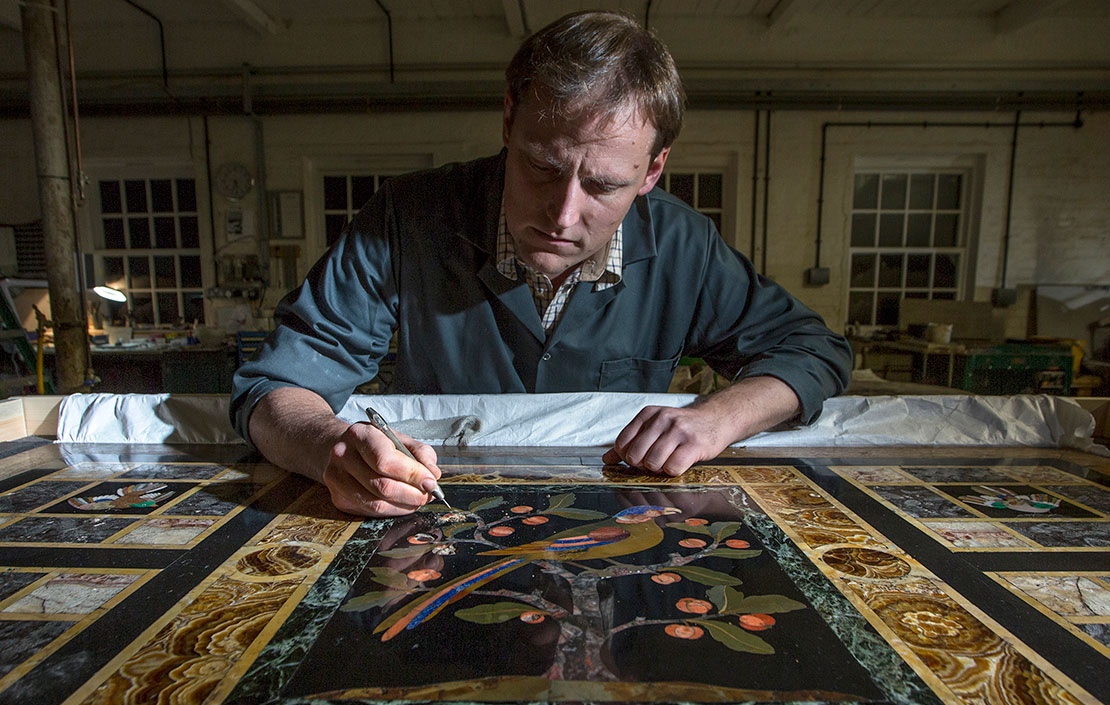
Under the dust in the old stables, colours gleam. Evening-sky blue, deepest black, frog-pond green, turquoise and pale pink as translucent as fairy wings. Shelves are crammed with lumps of rock in all sizes, some with cut faces that shine with jewel shades when Thomas Greenaway sprays a mist of water onto them. An unassuming figure with a wide smile and quiet enthusiasm, he’s the only person in the UK who can look at this selection and see what could be created.
He’s a master of pietra dura, ‘hard stone’ in Italian, cutting stones into a jigsaw of shapes and fitting them together to create an image. Commesso, or Florentine mosaic, was developed under Cosimo de Medici and his son Grand Duke Ferdinando I in 16th-century Florence, where the Galleria dei Lavori – now the Opificio delle Pietre Dure (Workshop for Hard Stone) – was founded in 1588. It’s still open, together with a museum.
Widely collected by those on the Grand Tour until the age of mass production, pietra dura adorns many country houses and museums, particularly Charlecote Park, Warwickshire, and the V&A. One of the greatest pieces ever created, the Badminton Cabinet made for the 3rd Duke of Beaufort, sold in 2004 for £19 million. It’s a work that was a key inspiration for Thomas.
It was working in wood that first claimed Thomas’s attention, however: he started off in marquetry, pietra dura’s natural cousin.
‘I started at the Chippendale School of Furniture in East Lothian,’ he says. ‘We learnt lots of different techniques – veneer, carving and so on – but I particularly loved marquetry.
‘Then, I went to Florence with Art History Abroad, to one of the few remaining workshops where they teach the techniques as they were done in the 16th century. I was sitting next to a Michelangelo of pietra dura.’
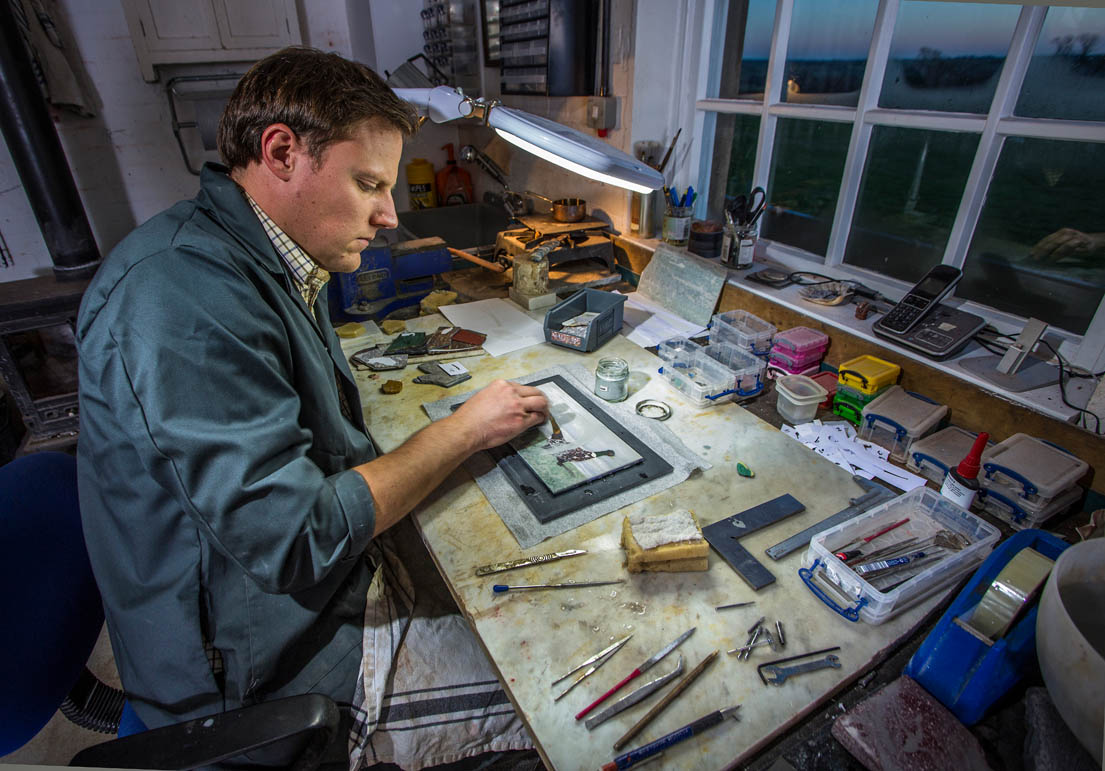
In his Northamptonshire workshop, once a carriage house and pleasantly warm thanks to recently installed underfloor heating, there is a mixture of new and ancient tools. Lurking against one wall is a formidable mechanical saw from California; on the far side is a huge polisher; and, in good light under a window, is a desk sporting a selection of tiny diamond files, made bespoke in Italy and Germany.
Exquisite houses, the beauty of Nature, and how to get the most from your life, straight to your inbox.
In the centre of the room is a tool that’s changed little since the 16th century. It’s an ‘archetto’ bow saw, a half-moon of chestnut steamed into shape and strung with a length of smooth iron wire. With this, intricate figures are cut, the stone held firm by a clamp and turned as needed, so the sawing is in the same direction.
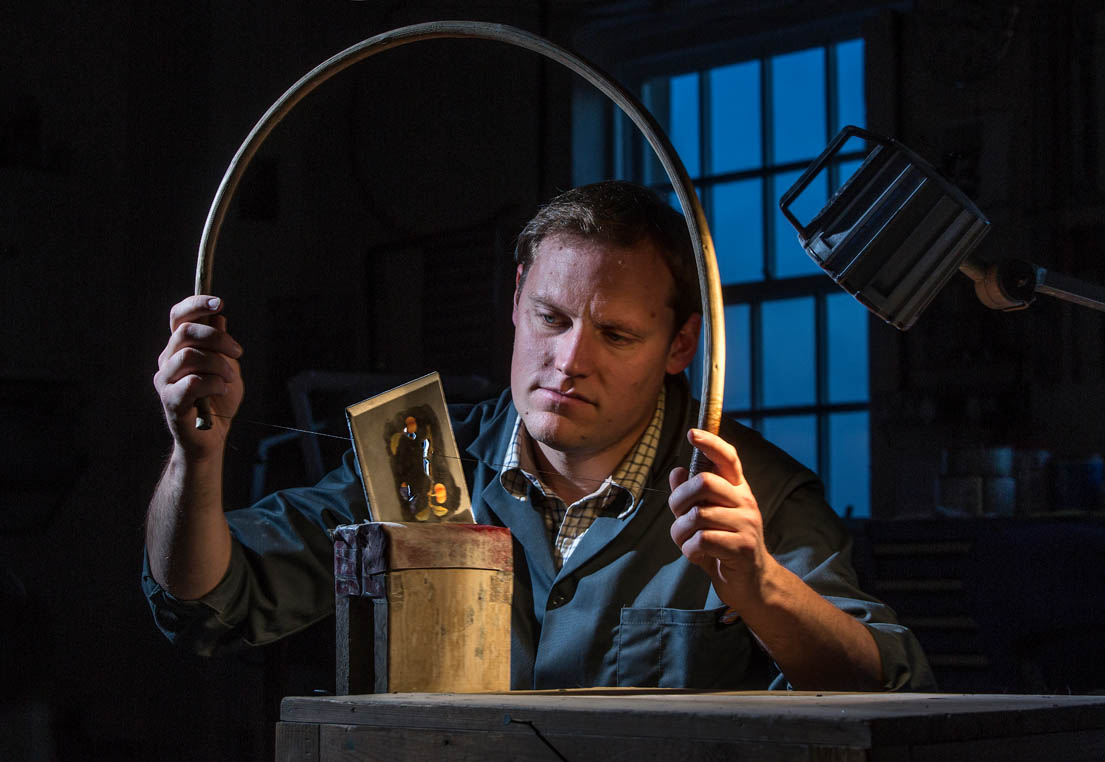
The cutting ability comes from carborundum paste, a semi-liquid emery board that allows the wire to gradually work its way through the stone. Once cut, the craftsman files off the last nooks and crannies, coaxing delicate patterns from jasper, porphyry, agate or quartz.
Each piece is cut with its sides angled, so that, although the visible edges meet precisely, with not a hair space between them, the reverse of the piece has troughs to receive the adhesive, made by Thomas from a mixture of beeswax and pine resin. ‘It’s lovely to work with because it’s natural,’ he notes.
To reach the delicate stage, he must extract thin slices of stone from large rocks, thinner pieces being backed by slate to reduce the risk of breakage. This is where the big mechanical saw proves invaluable. ‘Cutting a slice from a block of Egyptian porphyry can take three hours even with the saw,’ he explains. ‘In the old days, two men with a bow saw would have taken days.’
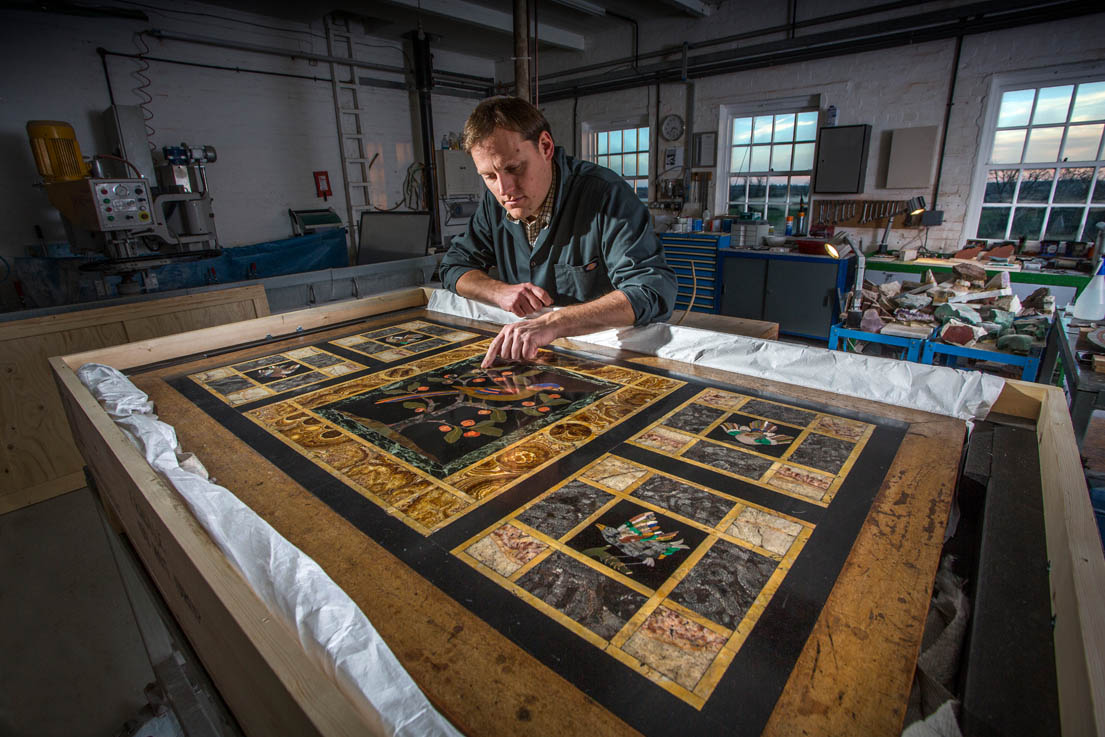
Where it makes sense, Thomas has no objection to 21st-century technology and even creates his own tools where necessary; this being such an esoteric world, few can be bought off the shelf and not many places make such specialised machines, hence looking as far afield as California. If something goes wrong, it’s also difficult to find someone to fix it: ‘You have to be a designer, geologist and an engineer, too.’
Finally, on the giant polisher, tables up to 6ft long can be smoothed with magnesite and diamond plates in ever-finer grades. ‘Pieces must be kept absolutely free of grit,’ the craftsman points out, ‘as a scratch can take hours to remove.’ Smaller pieces are polished by hand in circular motions with a block of agate and carborundum paste. It’s at this stage that the colours are revealed in their full glory, black marble changing from dusty chalkboard to jet.
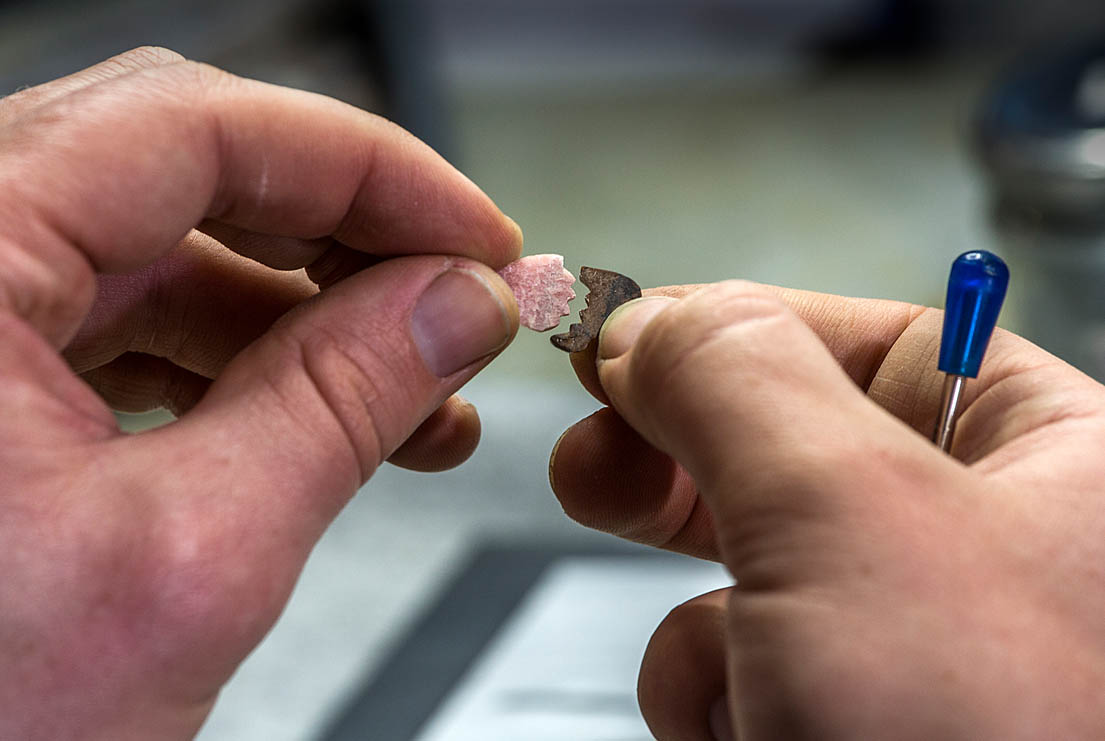
As it’s an unavoidably painstaking process – a 4in by 6in panel might take two weeks to complete – even Florence is suffering from a dearth of apprentices. ‘The surviving craftsmen are mostly 70 or 80 years old,’ laments Thomas.
‘It’s been passed down generations, but people don’t have the patience any more. The recession bit badly and some are just doing tombstones now. It’s so sad, considering the skills they have.’ To help reverse the decline, he hopes to open a workshop, running short courses and taking on apprentices.
Thomas spent nearly four years in different Florentine workshops before setting up on his own. He regularly fulfils private orders, from paperweights of an orange-tip butterfly set in black marble to panels for the lids of jewellery boxes, such as a shooting scene for his sister’s wedding present, a rotating chessboard/backgammon table and even panels for superyachts. A paperweight is about £350 and jewellery boxes start at £4,000.
At the suggestion of The Prince of Wales, whom he met at the INTBAU Excellence Awards in 2015, where he received an honourable mention, he joined the Art Workers’ Guild. ‘It can be a benefit working with other makers, such as stone carvers and lettering designers.’
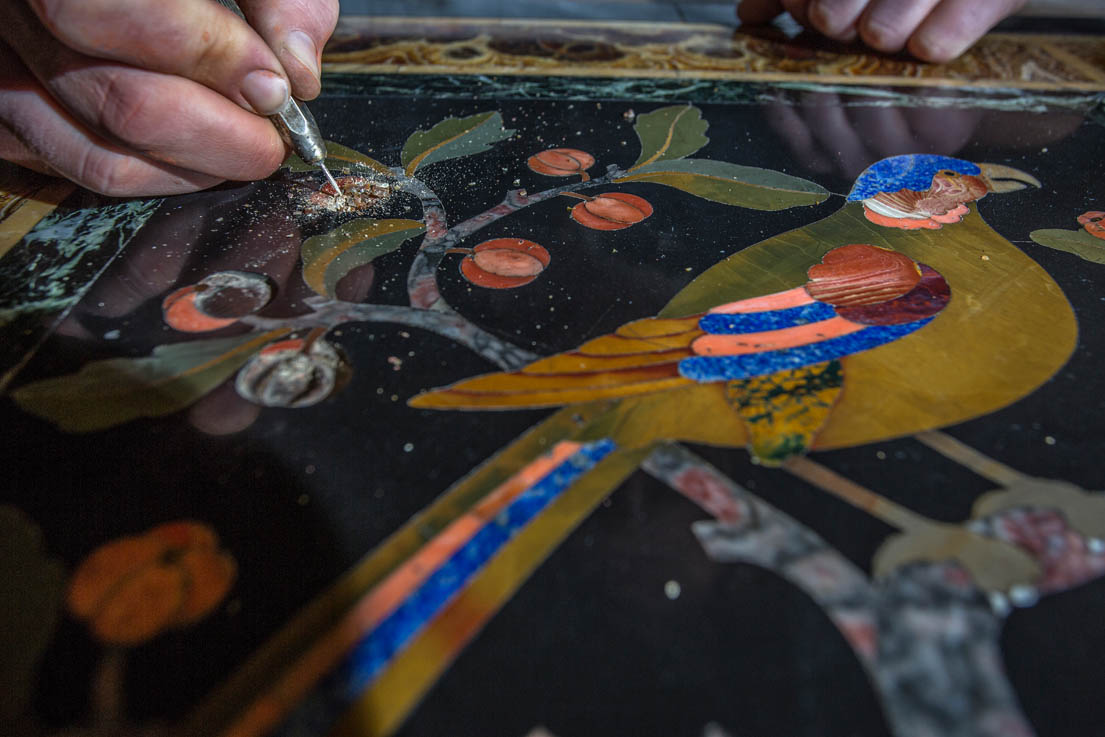
Thomas’s public commissions include a Latin inscription in Westminster Cathedral to commemorate the inaugural visit of Pope Benedict XVI to England in 2010, each letter cut by hand from Egyptian porphyry. Next is the restoration of a Tudor rose on the floor of the House of Lords, for which he will use some of the last pieces of Duke’s Red from Chatsworth: ‘It was quarried in 1823 and there’s only a small amount left.’
He also used it in the tomb of Richard III, erected in Leicester Cathedral in 2015. The King’s coat of arms, with its six lions pass-ant, took 350 individual pieces of stone. ‘The lapis-lazuli claws nearly drove me mad!’ Approved by the College of Arms, the design used precious stones, including yellow chalcedony, calcedonio giallo. ‘It’s really rare to get the shading from dark gold to light.’
The yellow chalcedony illustrates a vital element of pietra dura: the choosing of the material. It’s not simply a matter of picking a blue or green stone, but finding exactly the right piece. ‘Sometimes, the stone suggests an image,’ explains Thomas. ‘Sometimes, I look for the stone to create a picture.’
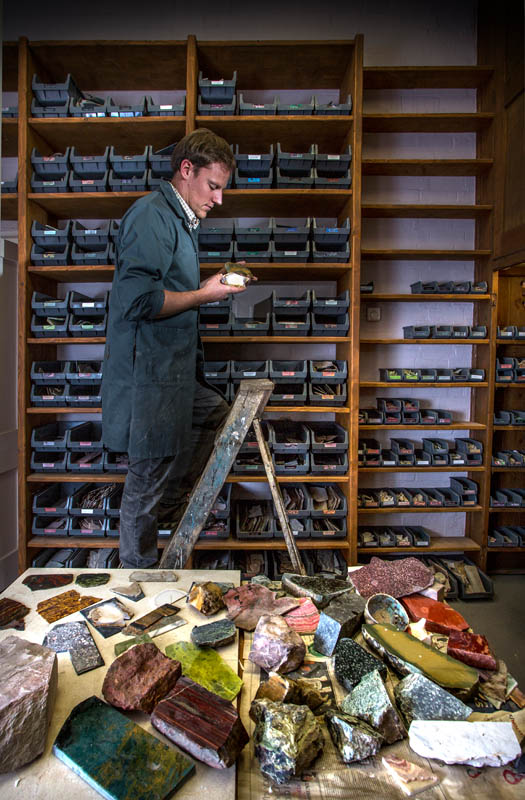
He will cut templates of paper into the shape needed and search myriad shards for the shading of leaves (verde d’Arno), a Florentine street (orobico), a lapwing’s plumage (Africano) or a stag (paesina). For a winter sky, he might choose a piece of transparent onyx painted blue on the reverse or, for the centre of a conch-shell lily, agate backed with gold leaf. The delicacy can be extraordinary: a dragonfly’s wings are made from onyx only 1mm thick.
He keeps his shelves full of raw material via regular trips to quarries in Italy and good contacts with quarrymen who know what he’s looking for. Some stones are increasingly rare: ‘It’s very hard to find black marble without veining now,’ he reveals. ‘You have to be able to see what a rock will be like inside.’
On a trip to the Pitti Palace in Florence, the young Thomas found ‘everyone else was looking at the paintings, but I was looking at the pietra-dura floor’.
He adds, wonderingly: ‘They used to do pietra-dura relief work, too, but that technique is all but lost.’ If anyone can revive it, it will be this dedicated artist of stone.
Find out more about Thomas Greenaway’s work at the Greenaway Mosaics website: www.greenawaymosaics.com.

Country Life’s best Living National Treasures of 2018: Stained glass to neon signs, via sculpture, baskets and fishermen
Our hugely popular series tells fascinating tales about extraordinary people keeping traditional skills alive across Britain, illustrated by the wonderful
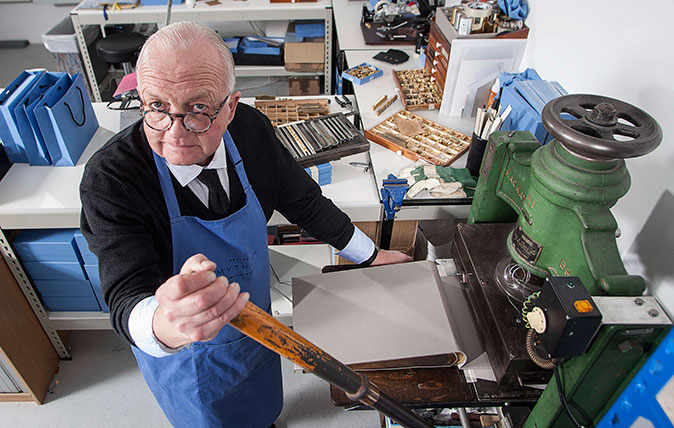
The gold stamper: ‘The younger generation is very appreciative of artisan work – they’re the ones driving the trend’
This week's Living National Treasure is John Timms, the man who leads the team that stamps gold lettering into thousands

The neon sign maker: 'Piccadilly Circus was our answer to Vegas – now it's all pixellated screens'
This week's Living National Treasure is Marcus Bracey, the man behind the neon signs that light up our cities. He
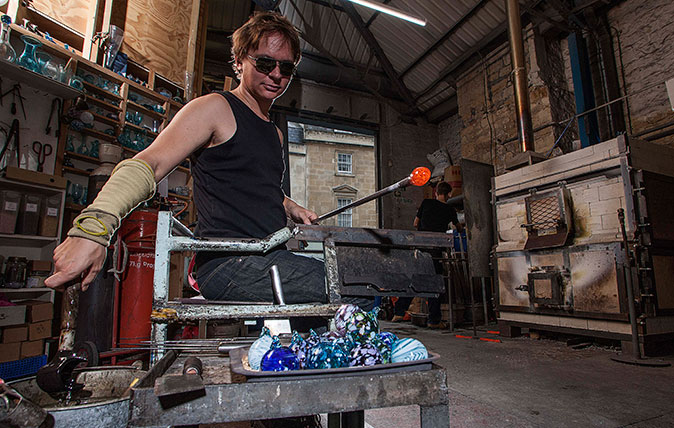
Credit: Living National Treasure: The Glassblower - ©Country Life/Richard Cannon
The Glassblower: 'When something goes wrong you can't fix it – you just sling in into the bosh bucket and start again'
Ian Shearman's team of glassblowers are still making glass using a technique that's 2,000 years old. Mary Miers found out
Octavia, Country Life's Chief Sub Editor, began her career aged six when she corrected the grammar on a fish-and-chip sign at a country fair. With a degree in History of Art and English from St Andrews University, she ventured to London with trepidation, but swiftly found her spiritual home at Country Life. She ran away to San Francisco in California in 2013, but returned in 2018 and has settled in West Sussex with her miniature poodle Tiffin. Octavia also writes for The Field and Horse & Hound and is never happier than on a horse behind hounds.
